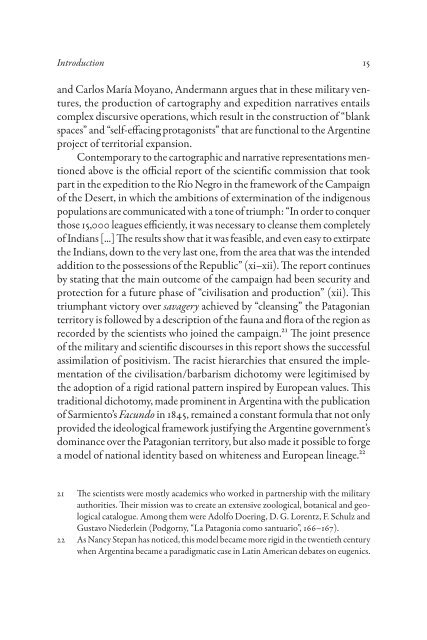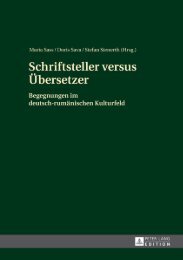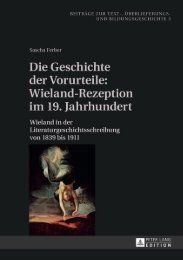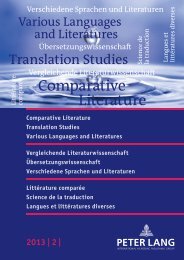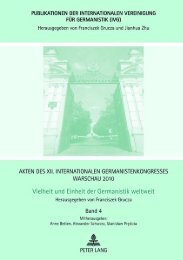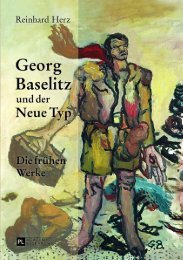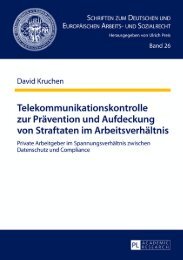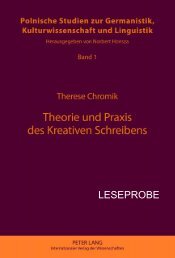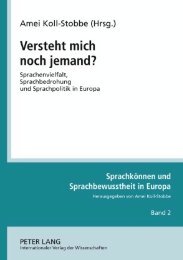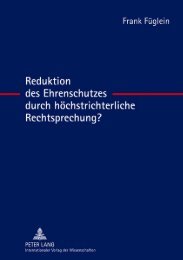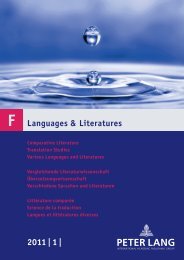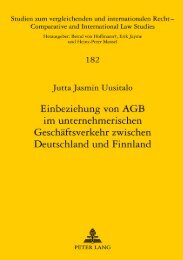Extract (PDF) - Peter Lang
Extract (PDF) - Peter Lang
Extract (PDF) - Peter Lang
You also want an ePaper? Increase the reach of your titles
YUMPU automatically turns print PDFs into web optimized ePapers that Google loves.
Introduction 15<br />
and Carlos María Moyano, Andermann argues that in these military ventures,<br />
the production of cartography and expedition narratives entails<br />
complex discursive operations, which result in the construction of “blank<br />
spaces” and “self-effacing protagonists” that are functional to the Argentine<br />
project of territorial expansion.<br />
Contemporary to the cartographic and narrative representations mentioned<br />
above is the official report of the scientific commission that took<br />
part in the expedition to the Río Negro in the framework of the Campaign<br />
of the Desert, in which the ambitions of extermination of the indigenous<br />
populations are communicated with a tone of triumph: “In order to conquer<br />
those 15,000 leagues efficiently, it was necessary to cleanse them completely<br />
of Indians [...] The results show that it was feasible, and even easy to extirpate<br />
the Indians, down to the very last one, from the area that was the intended<br />
addition to the possessions of the Republic” (xi–xii). The report continues<br />
by stating that the main outcome of the campaign had been security and<br />
protection for a future phase of “civilisation and production” (xii). This<br />
triumphant victory over savagery achieved by “cleansing” the Patagonian<br />
territory is followed by a description of the fauna and flora of the region as<br />
recorded by the scientists who joined the campaign.21 The joint presence<br />
of the military and scientific discourses in this report shows the successful<br />
assimilation of positivism. The racist hierarchies that ensured the implementation<br />
of the civilisation/barbarism dichotomy were legitimised by<br />
the adoption of a rigid rational pattern inspired by European values. This<br />
traditional dichotomy, made prominent in Argentina with the publication<br />
of Sarmiento’s Facundo in 1845, remained a constant formula that not only<br />
provided the ideological framework justifying the Argentine government’s<br />
dominance over the Patagonian territory, but also made it possible to forge<br />
a model of national identity based on whiteness and European lineage.22<br />
21 The scientists were mostly academics who worked in partnership with the military<br />
authorities. Their mission was to create an extensive zoological, botanical and geological<br />
catalogue. Among them were Adolfo Doering, D. G. Lorentz, F. Schulz and<br />
Gustavo Niederlein (Podgorny, “La Patagonia como santuario”, 166–167).<br />
22 As Nancy Stepan has noticed, this model became more rigid in the twentieth century<br />
when Argentina became a paradigmatic case in Latin American debates on eugenics.


